-
The medium of deconfined gluons and light quarks, known as quark-gluon plasma (QGP) [1], can be produced in ultrarelativistic heavy-ion collisions (URHICs). Charmonium, as a bound state of a charm (c) and anti-charm (
ˉc ) quark pair, has been proposed as a clean probe to study the formation of QGP in heavy-ion collisions [2]. Different charmonium states bound by acˉc potential with color screening from in-medium light partons sequentially melt as the temperature of the QGP medium increases [3]. Moreover, charmonium states suffer a direct dissociation from in-medium parton inelastic scattering [4–8], which corresponds to an additional imaginary part of thecˉc potential [9, 10]. In nucleus-nucleus (AA) collisions at the Large Hadron Collider (LHC), the initial temperature of QGP can be far above the dissociation temperatureTd of the charmonium ground stateJ/ψ [11, 12]. Most primordially produced charmonia are dissociated in the medium, and the final production is dominated by the coalescence of abundant charm and anti-charm quarks in the regions where medium local temperature becomes smaller than the dissociation temperature of charmonium [13–15]. The final spectrum of the charmonia are affected by charm quark diffusion in the medium and their coalescence probability below the dissociation temperature [16–20].In p-Pb collisions at
√sNN=5.02 TeV, a small deconfined medium is also believed to be generated [21], where the medium temperature is slightly above the critical temperatureTc but still below the dissociation temperatureTd≃2Tc ofJ/ψ , which is of the order of its binding energyTd≃Eb . If the mass and typical momentum of a charm quark are considered to be larger than the charmonium binding energy,m>p>3T>Td≃Eb , one can integrate out the hard scale m and soft scale p and arrive at a non-relativistic potential description [22].Furthermore, the recombination of charmonium production becomes negligible in pA collisions [23, 24] owing to small
cˉc production. This excludes contamination from the coalescence ofcˉc pairs and the correlation between differentcˉc pairs, which leads to the recombination contribution of charmonium. These features make the Schrödinger equation, which evolves only onecˉc pair in a potential, viable for a quantum description of charmonium in pA collisions.With similar considerations, the recombination of bottomonia in URHICs is negligible [25–29], and an open quantum system (OQS) description of bottomonium evolution in a QCD medium, which tracks one bottom/anti-bottom (
bˉb ) pair, has been constructed by various models in recent years①. The QCD medium environment can be encoded in the Hamiltonian of the heavy quark/antiquark (QˉQ ) subsystem as additional terms equivalent to real and imaginary parts of the potential. These studies begin with solving the Schrödinger equation with a complex potential [32–34], then a stochastic potential [35], and a Schrödinger-Langevin type equation [36]. More involved calculations tend to evolve the density matrix of theQˉQ subsystem with the Lindblad formalism [37], whose different terms represent color screening, primordial dissociation, and the recombination of one pair [38]. One such calculation incorporated with the quantum trajectory method can be found in [39].In this paper, we do not conduct a complicated quantum treatment, as discussed for bottomonium, but solve the Schrödinger equation with a complex potential. We parameterize the in-medium temperature dependent complex potential of a
cˉc dipole according to lattice QCD data. Then, we evolve acˉc pair wave-function by solving the time-dependent Schrödinger equation in position space using the Crank-Nicolson [40] implicit method. The final production ofJ/ψ andψ(2S) are obtained by projecting the wave-functions ofcˉc dipoles to the charmonium wave-function (by solving the time-independent Schrödinger equation with vacuum potential) after they leave the hot medium along different trajectories. Because the geometric sizes of different charmonium wave-functions are different,J/ψ andψ(2S) experience different magnitudes of the screening effect and inelastic collisions with thermal partons. This results in different dissociations ofJ/ψ andψ(2S) .Because the suppressions of
J/ψ andψ(2S) are clearly distinguished, as shown by experimental data, it is essential to employ different scenarios of potential in the Schrödinger equation and understand the potential at play behind the data, especially their overall and relative suppression. To understand the role of color screening, we implement a strong and weak screening scenario with and without the imaginary part of the potential.This paper is organized as follows: In Sec. II, the Schrödinger equation model and parametrizations of the heavy quark potential are introduced. Medium evolution, which provides the space-time dependent temperature profile, is described using hydrodynamic equations. In Sec. III, we discuss the application of the model to p-Pb collisions at LHC energies, and
RpA s ofJ/ψ andψ(2S) are calculated with different in-medium potentials and compared with the experimental data. We conclude in Sec. IV. -
Heavy quark dipoles are produced in initial parton hard scatterings and then evolve into charmonium eigenstates. The momentum distribution of
cˉc dipoles is approximated to be theJ/ψ momentum distribution in proton-proton (pp) collisions. Therefore, in p-Pb collisions, the initial distribution of primordially producedcˉc dipoles can be obtained through a superposition of the effective pp collisions [23],fΨ(p,x|b)=(2π)3δ(z)Tp(xT)TA(xT−b)×Rg(xg,μF,xT−b)dˉσΨppd3p,

(1) where
b is the impact parameter,xT is the transverse coordinate,TA(xT)=∫dzρA(xT,z) is the nuclear thickness function, and the nuclear density is taken as the Woods-Saxon distribution.Tp(xT) is the proton thickness, where proton density is taken as a Gaussian distribution [23]. The width of the Gaussian function is determined with the proton charge radius⟨r⟩p=0.9 fm [41]. The shadowing effect is included with the inhomogeneous modification factorRg [42] for gluons with the longitudinal momentumxg=ey ET/√sNN and factorization factorμF=ET . Transverse energy and momentum rapidity are defined asET=√m2Ψ+p2T andy=1/2ln((E+pz)/(E−pz)) , respectively. The values ofthe gluon shadowing factorRg are obtained using the EPS09model [43]. The effective initial momentum distributiondˉσΨppd3p of charmonium in p-Pb collisions includes the Cronin effect [44]. Before two gluons fuse into a heavy quark dipole, they obtain additional transverse momentum via multi-scatterings with the surrounding nucleons. The extra momentum will be inherited by the producedcˉc dipole or charmonium states. With the random walk approximation, the Cronin effect is included with the modification in the momentum-differential cross section measured in pp collisions,dˉσΨppd3p=1πagNl∫d2qTe−q2TagNldσΨppd3p,

(2) where
l(xT)=0.5TA(xT)/ρA(xT,z=0) is the average path length of a gluon in the nucleus travelling through before scattering with another gluon in the proton to produce a heavy quark dipole at the positionxT .agN represents the extra transverse momentum square in a unit of length of nucleons before the fusion process. Its value is taken to beagN=0.15 GeV2/fm [45]. The charmonium distribution in pp collisions has been measured by the ALICE Collaboration at 2.76 TeV and 7 TeV [46, 47]. With these data, we parametrize the normalizedpT distribution of charmonium at√sNN=5.02 TeV and obtaindNJ/ψ2πpTdpT=(n−1)π(n−2)⟨p2T⟩pp[1+p2T(n−2)⟨p2T⟩pp]−n,

(3) where
n=3.2 , and the mean transverse momentum square of charmonium is parametrized as⟨p2T⟩pp(y)=12.5×[1−(y/ymax)2](GeV/c)2 , in which the maximum rapidity of charmonium is defined withymax=ln(√sNN/mΨ) [48].mΨ is the charmonium mass. -
The heavy quark potential of the
cˉc dipole is modified by a hot medium, which affects the evolution of charmonium wave functions [49–51]. Hot medium effects can be included in the Hamiltonian ofcˉc dipoles. Because a charm quark is heavy compared with the inner movement of charmonium bound states, the relativistic effect is ignored when considering the inner structure of a charmonium. We employ the time-dependent Schrödinger equation to describe the evolution ofcˉc dipole wave functions with in-medium complex potentials. Assuming the heavy quark-medium interaction is spherical without angular dependence, there is no mixing between charmonium eigenstates with different angular momenta in the wave function of thecˉc dipole. The radial part of thecˉc dipole wave function in the center of mass frame is separated as follows:iℏ∂∂tψ(r,t)=[−ℏ22mμ∂2∂r2+V(r,T)+L(L+1)ℏ22mμr2]ψ(r,t),

(4) where r is the relative distance between charm and anti-charm quarks, and t is the proper time in the center of mass frame.
mμ=m1m2/(m1+m2)=mc/2 is the reduced mass, andmc is the charm quark mass.ψ(r,t) is defined asψ(r,t)=rR(r,t) , whereR(r,t) is the radial part of thecˉc dipole wave function. The complete wave function of thecˉc dipole can be expanded in the eigenstates of the vacuum Cornell potential,Ψ(r,θ,ϕ)=∑nlmcnlmRnl(r)Ylm(θ,ϕ) .Ylm is the spherical harmonics function, andL=(0,1,...) is the quantum number of the angular momentum. In an ideal fluid with zero viscosity, the heavy quark potentialV(r,T) is radial. There are no transitions between charmonium eigenstates with different angular momenta L. The potential depends on the local temperature of the medium, which is given by the hydrodynamic model in the next section. The radial Schrödinger equation (Eq. (4)) is solved numerically using the Crank–Nicolson method (taking natural unitsℏ=c=1 ). The numerical form of the Schrödinger equation is simplified toTn+1j,kψn+1k=Vnj.

(5) Here, j and k are the index of rows and columns in the matrix
T , respectively. The non-zero elements in the matrix areTn+1j,j=2+2a+bVn+1j,Tn+1j,j+1=Tn+1j+1,j=−a,Vnj=aψnj−1+(2−2a−bVnj)ψnj+aψnj+1,

(6) where i is an imaginary number,
a=iΔt/(2mμ(Δr)2) , andb=iΔt . The subscript j and superscript n inψnj represent the coordinaterj=r0+j⋅Δr and timetn=t0+n⋅Δt , respectively.Δr andΔt are the steps of the radius and time in the numerical simulation, respectively, and their values are taken to beΔt=0.001 fm/c andΔr=0.03 fm, respectively.t0 is the start time of the Schrödinger equation. The matrixTn at each time step depends on the in-medium heavy quark potentialV(r,T) , which is given later.The Schrödinger equation (Eq. (4)) describes the evolution of the wave function of the
cˉc dipole fromt≥t0 . The initial wave function of thecˉc dipole is taken to be one of the charmonium eigenstates. After traveling through the hot medium, the fractions|cnl(t)|2 of each charmonium eigenstate (1S, 1P, 2S, etc.) in thecˉc dipoles change with time.cnl(t) is defined ascnl(t)=∫Rnl(r)e−iEnltψ(r,t)rdr,

(7) where the radial wave function
ψ(r,t) is given by Eq. (5). The ratio of the final and initial fractions of a certain charmonium state in onecˉc dipole is expressed asRdirect(t)=|cnl(t)|2|cnl(t0)|2 . In p-Pb collisions, the initial spatial and momentum distributions of primordially producedcˉc dipoles are given by Eq. (1). After averaging over the position and momentum bins of differentcˉc dipoles in p-Pb collisions, we can obtain the ensemble-averaged fractions of a certain charmonium state in thecˉc dipole⟨|cnl(t)|2⟩en . The direct nuclear modification factor of the charmonium eigenstate (n,l ) is written asRdirectpA(nl)=⟨|cnl(t)|2⟩en⟨|cnl(t0)|2⟩en=∫dxΨdpΨ|cnl(t,xΨ,pΨ)|2dNΨpAdxΨdpΨ∫dxΨdpΨ|cnl(t0,x0,pΨ)|2¯dNΨpAdxΨdpΨ,

(8) where
xΨ andpΨ are the position and total momentum of the correlatedcˉc dipole, respectively. Without the hot medium effects, these correlatedcˉc dipoles are simply charmonium eigenstates without dissociation.dNΨpAdxΨdpΨ is the initial spatial and momentum distributions of primordially produced charmonium in p-Pb collisions and is given by Eq. (1). Note that in the denominator,¯dNΨpAdxΨdpΨ is calculated using Eq. (1) excluding cold nuclear matter effects.After considering feed-down contributions from excited states, the nuclear modification factor of
J/ψ can be obtained (which is given in the experimental data),RpA(J/ψ)=∑nl⟨|cnl(t)|2⟩enfnlppBnl→J/ψ∑nl⟨|cnl(t0)|⟩2⟩enfnlppBnl→J/ψ,

(9) where
Bnl→J/ψ is the branching ratio of charmonium eigenstates with the quantum number(n,l) decaying into the ground stateJ/ψ . We consider the decay channelsχc→J/ψ andψ(2S)→J/ψ .fnlpp is the direct production of the charmonium eigenstate (J/ψ ,χc ,ψ(2S) ) without the feed-down process in pp collisions. The ratio of direct charmonium production is extracted to befJ/ψpp:fχcpp:fψ(2S)pp=0.68:1:0.19 [52]. -
In vacuum, the heavy quark potential in the quarkonium can be approximated as the Cornell potential. At finite temperature, the Cornell potential is screened by thermal light partons. The real part of the in-medium heavy quark potential is between the limits of the free energy F and internal energy U of charmonium. The in-medium potential has been studied using lattice QCD calculations and potential models [53–56]. We parametrize the temperature and coordinate dependence of free energy using the formula
F(T,r)=−αr[e−μr+μr]−σ23/4Γ[3/4](rμ)1/2K1/4[(μr)2]+σ23/2μΓ[1/4]Γ[3/4],

(10) where
α=π/12 andσ=0.2 GeV2 are given in the Cornell potentialVc(r)=−α/r+σr . The Γ andK1/4 are the Gamma function and modified Bessel function, respectively. The screened mass in Eq. (10) is taken as [54]μ(ˉT)√σ=sˉT+aσt√π2[erf(b√2σt)−erf(b−ˉT√2σt)],

(11) with
ˉT≡T/Tc , whereTc is the critical temperature of the deconfined phase transition. Other parameters are taken ass=0.587 ,a=2.150 ,b=1.054 , andσt=0.07379 .erf(z) is the error function. The internal energy of a heavy quarkonium can be obtained via the relationU(T,r)=F+T(−∂F/∂T) . When the slope of the line becomes flat, this indicates that there is no attractive force to restrain the wave function at the distance r. At temperatures of approximatelyTc , there is a sudden shift in the screened massμ(ˉT) [54]. The internal energy may become slightly larger than the vacuum Cornell potential. This behavior can be seen inU(T,r) atr∼0.4 fm in Fig. 1 and becomes more evident atT→Tc . To avoid this subtlety, for the heavy quark potential, we take the free energy as the limit of strong color screening and the vacuum Cornell potential as the limit of extremely weak color screening. The realistic potential is between these two limits. Different heavy quark potentials in Fig. 1 are inserted into the Schrödinger equation to calculate the nuclear modification factors ofJ/ψ andψ(2S) in the next section.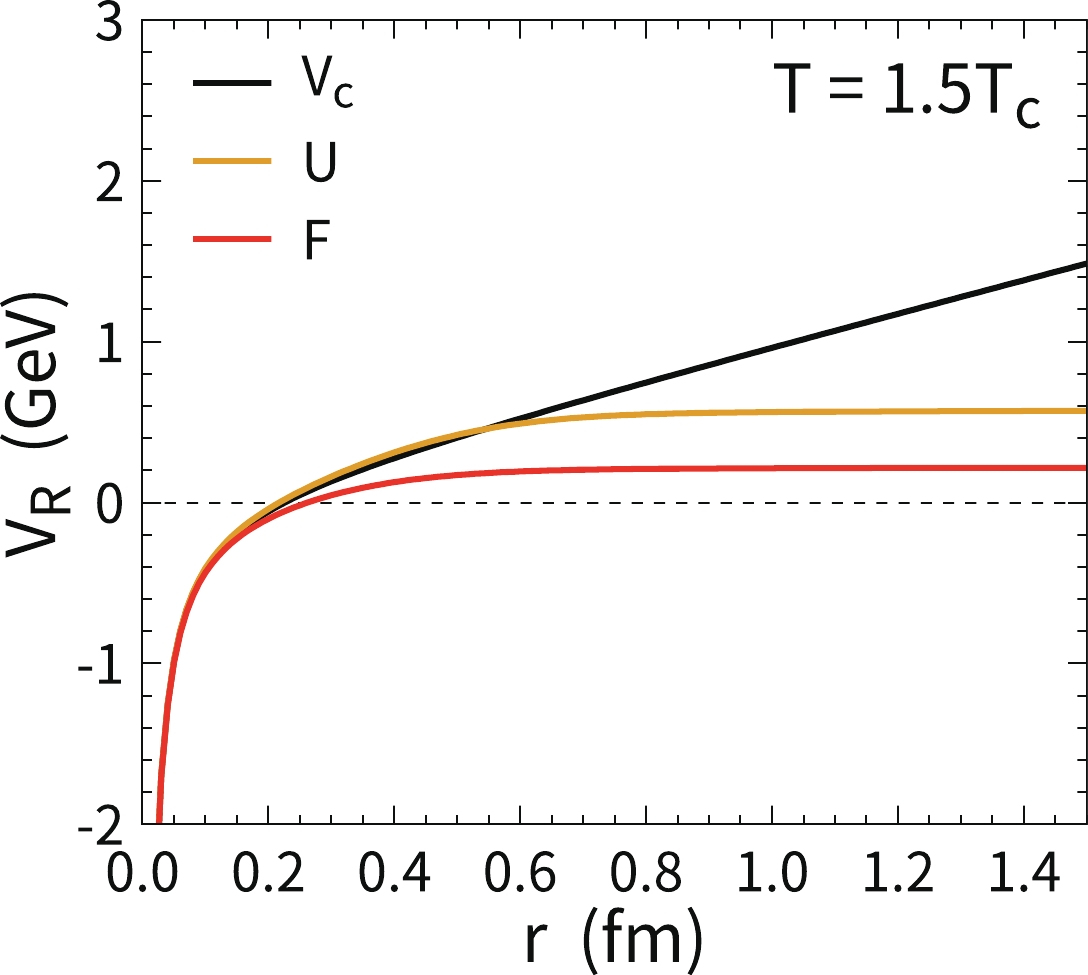
Figure 1. (color online) Different parametrizations of the real part of heavy quark potentials as a function of r at
T=1.5Tc . The free energyF(r,T) , internal energyU(r,T) , and Cornell potentialVc(r) are plotted with different colored lines.In the hot medium, quarkonium bound states can also be dissociated by inelastic scatterings with thermal light partons. This process contributes an imaginary part to the potential
V(T,r) . We parameterize the temperature and spatial dependence of the imaginary potential usingVI(T,ˉr)=−iT(a1ˉr+a2ˉr2),

(12) where i is the imaginary unit, and
ˉr≡r/fm is a dimensionless variable. The dimensionless coefficientsa1 anda2 are obtained by invoking Bayesian inference to fit the lattice QCD calculations [57]. We focus on the temperature relevant to p-Pb collisions,Tc<T<1.9Tc . The results are shown in Fig. 2, where the gray band represents the95% confidence interval, and the black curve corresponds to the parameter seta1=−0.040 anda2=0.50 , which maximizes the posterior distribution. InVI , the magnitude of the imaginary potential becomes smaller at smaller distances. This results in a weaker reduction in theJ/ψ component than theψ(2S) component in the wave function of thecˉc dipole. Because the imaginary potential in Fig. 2 is calculated in the gluonic medium, we take the same formula for QGP in heavy-ion collisions, which contributes some uncertainty to the suppression of charmonium in p-Pb collisions [56, 58]. The uncertainty on the imaginary potential is partially considered with the theoretical band in Fig. 2, which will be reflected in the charmoniumRpA .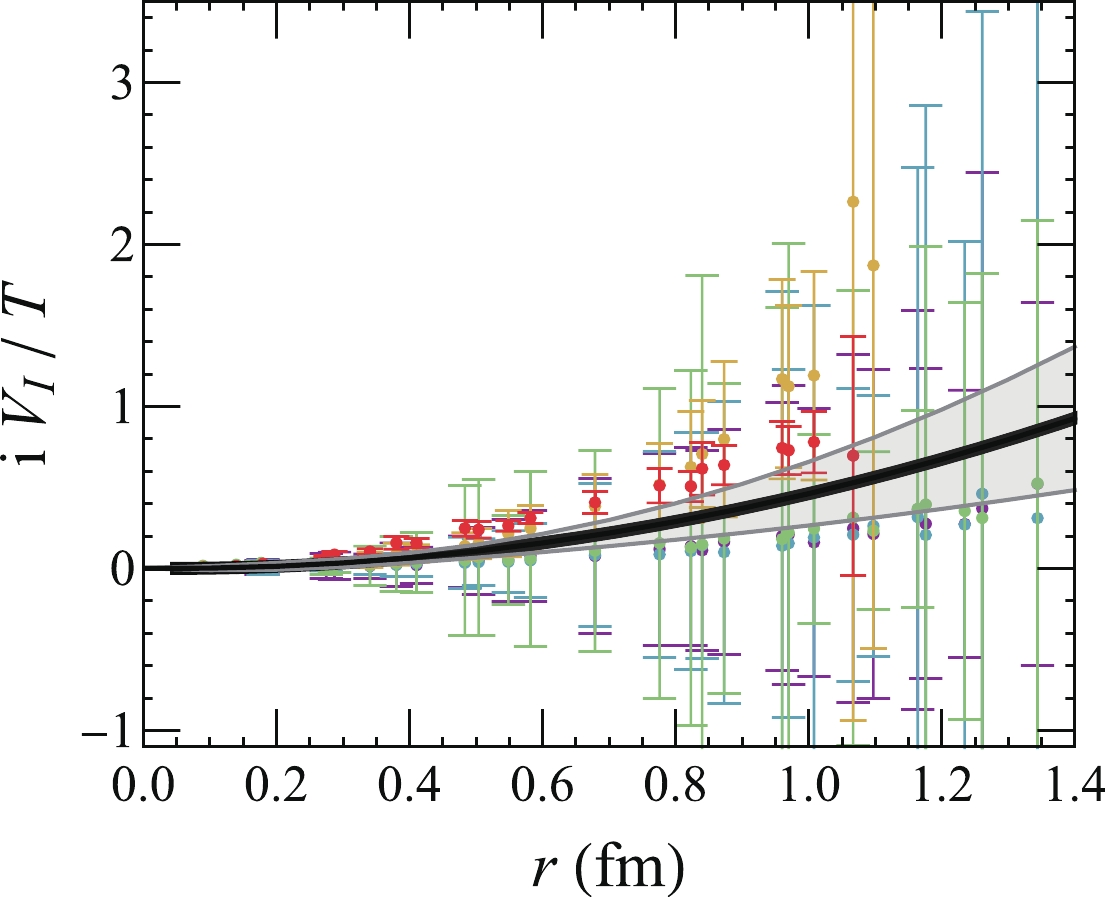
Figure 2. (color online) Imaginary part of the heavy quark potential as a function of distance. The gray band represents the
95 % confidence region, whereas the black curve corresponds to the maximum a posteriori parameter set. The data is cited from [57]. Symbols from purple to red correspond to results from low to high temperature.In the hot medium produced in p-Pb collisions, heavy quark dipoles experience different local temperatures as they move along different trajectories. The real and imaginary parts of the potential, depending on the local temperatures, also change with time. The wave package at each time step is obtained from the Schrödinger equation, while its normalization is reduced by the imaginary part of the Hamiltonian. Therefore, the fractions of charmonium eigenstates in the wave package change with time owing to in-medium potentials.
-
The dynamical evolution of the hot medium produced in p-Pb collisions at
√sNN=5.02 TeV is described by hydrodynamic equations [21].∂μνTμν=0,

(13) where
Tμν=(e+p)uμuν−gμνp is the energy-momentum tensor, e and p are the energy density and pressure, respectively, anduμ is the four velocity of the medium. The equation of state is required to close the hydrodynamic equations. The deconfined phase is treated as an ideal gas of gluons and massless u and d quarks plus s quarks with the massms=150 MeV. The confined phase is treated using the hadron resonance gas model (HRG) [59]. Two phases are connected with a first-order phase transition, and the critical temperature of the phase transition is determined asTc=165 MeV by choosing the mean field repulsion parameter and bag constant to beK=450 MeVfm3 andB1/4=236 MeV [60], respectively. With the multiplicity of light hadrons measured in p-Pb collisions and theoretical simulations from other hydrodynamic models [21, 61], we take the maximum initial temperature of the hot medium to beT0(xT=0|b=0)=248 MeV in forward rapidity and289 MeV in backward rapidity. Event-by-event fluctuations in hydrodynamic evolution are not yet included. The profile of the initial energy density is also consistent with the results from a multiple phase transport (AMPT) model [62].Hydrodynamic equations begin evolution from
τ0=0.6 fm/c, where the hot medium is assumed to reach local equilibrium. The time evolution of the local temperature atxT=0 in forward and backward rapidity at most central collisions with the impact parameter b =0 is plotted in Fig. 3. Medium evolution with other impact parameters can be obtained via the scale of initial entropy, which depends onNp(b) andNcoll(b) . -
We apply the Schrödinger equation to charmonium dynamical evolution in
√sNN=5.02 TeV p-Pb collisions. In Fig. 5,RpAs ofJ/ψ andψ(2S) in forward rapidity (defined as the proton-going direction) are plotted. The shadowing effect modifies the parton densities in the colliding nucleus, which changes the gluon density and charmonium production in nucleus collisions compared with those in pp collisions. Because the shadowing effect exists before the initial production of a heavy quark pair in parton hard scatterings, it gives the same modification factor ofJ/ψ andψ(2S) , shown as the black dotted line in Fig. 5. However, the experimental data show different degrees of suppression of the production ofJ/ψ andψ(2S) , which indicates different strengths of final state interactions on different charmonium states. The magnitude of the color screening effect on charmonium deserves further investigation.To study the color screening effect on charmonium observables, we first test a scenario without an imaginary potential, as shown in Fig. 4. The calculations for a strong screening scenario with the F potential and a weak screening scenario with vacuum potential are presented in the figure. In the strong color screening scenario with the F potential, the wave function of the
cˉc dipole expands outside owing to the weak attractive force between c andˉc . This reduces the overlap of the wave-function between thecˉc pair and charmonium eigenstate. This suppressesRpA ofJ/ψ andψ(2S) . The color screening effect is not strong enough to explain the strong suppression ofψ(2S)RpA , which indicates the necessity of including the imaginary potential from a phenomenological perspective.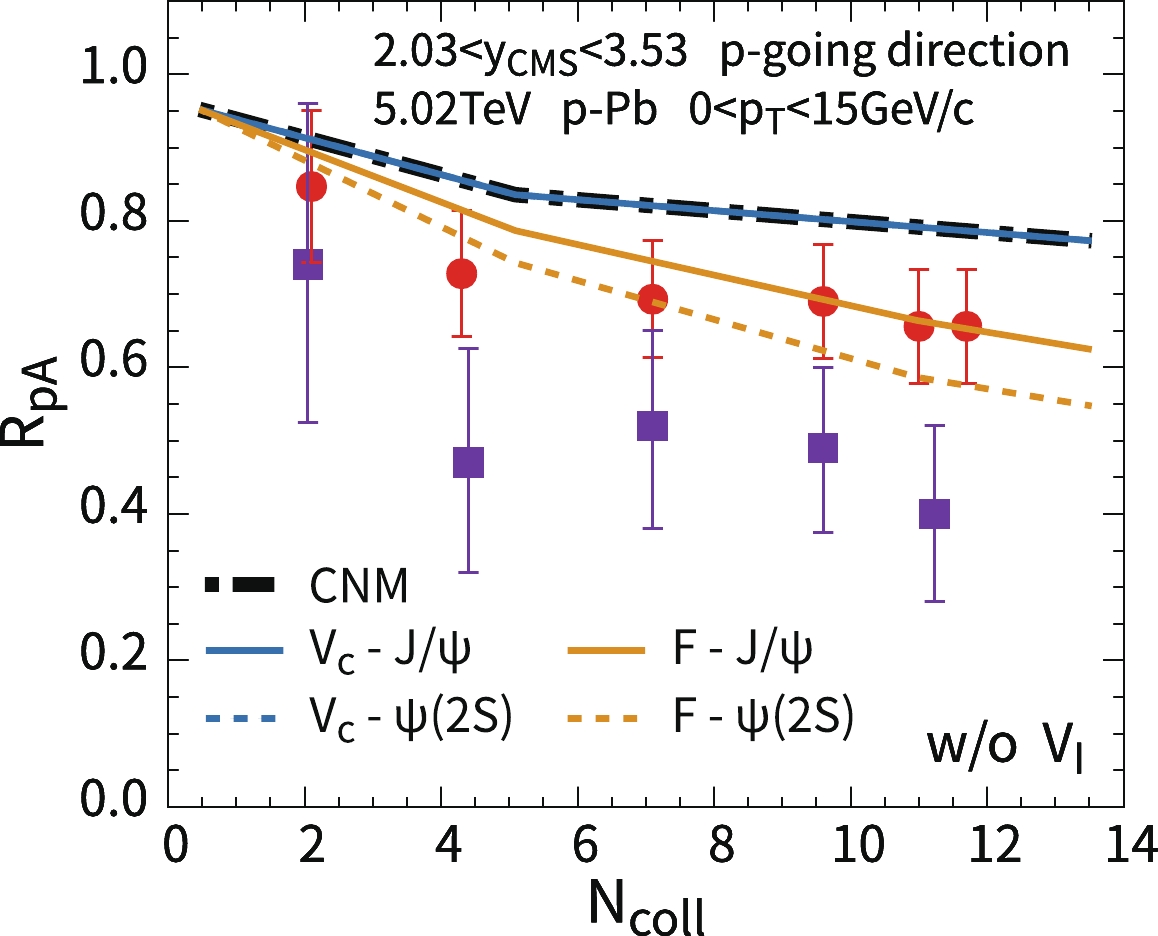
Figure 4. (color online) Nuclear modification factors of
J/ψ andψ(2S) as a function of the number of binary collisionsNcoll in the forward rapidity of√sNN=5.02 TeV p-Pb collisions. Only the real part of the heavy quark potential is included. The black dashed-dotted line is the calculation with only cold nuclear matter effects. The strong and weak limits of the potential are taken as the vacuum Cornell potentialV=Vc(r) and free energyV=F(r,T) , respectively. The experimental data are from the ALICE Collaboration [63, 64]. The red circles and blue squares correspond toJ/ψ andψ(2S) , respectively.In Fig. 5, both color screened real and imaginary potentials are included. In the upper panel of Fig. 5, only the imaginary potential is considered without the color screening effect. The theoretical band in
RpA represents the uncertainty on the parametrization ofVI . As shown, the imaginary potential can effectively explain bothRpA s ofJ/ψ andψ(2S) . A lowerRpA corresponds to the upper limit ofVI parametrization. As the magnitude ofVI increases with distance, theψ(2S) component in thecˉc dipole wave function is more suppressed. As shown in the lower panel of Fig. 5, in a strong screening scenario, the real part of the heavy quark potential is taken as free energy,VR=F(T,r) .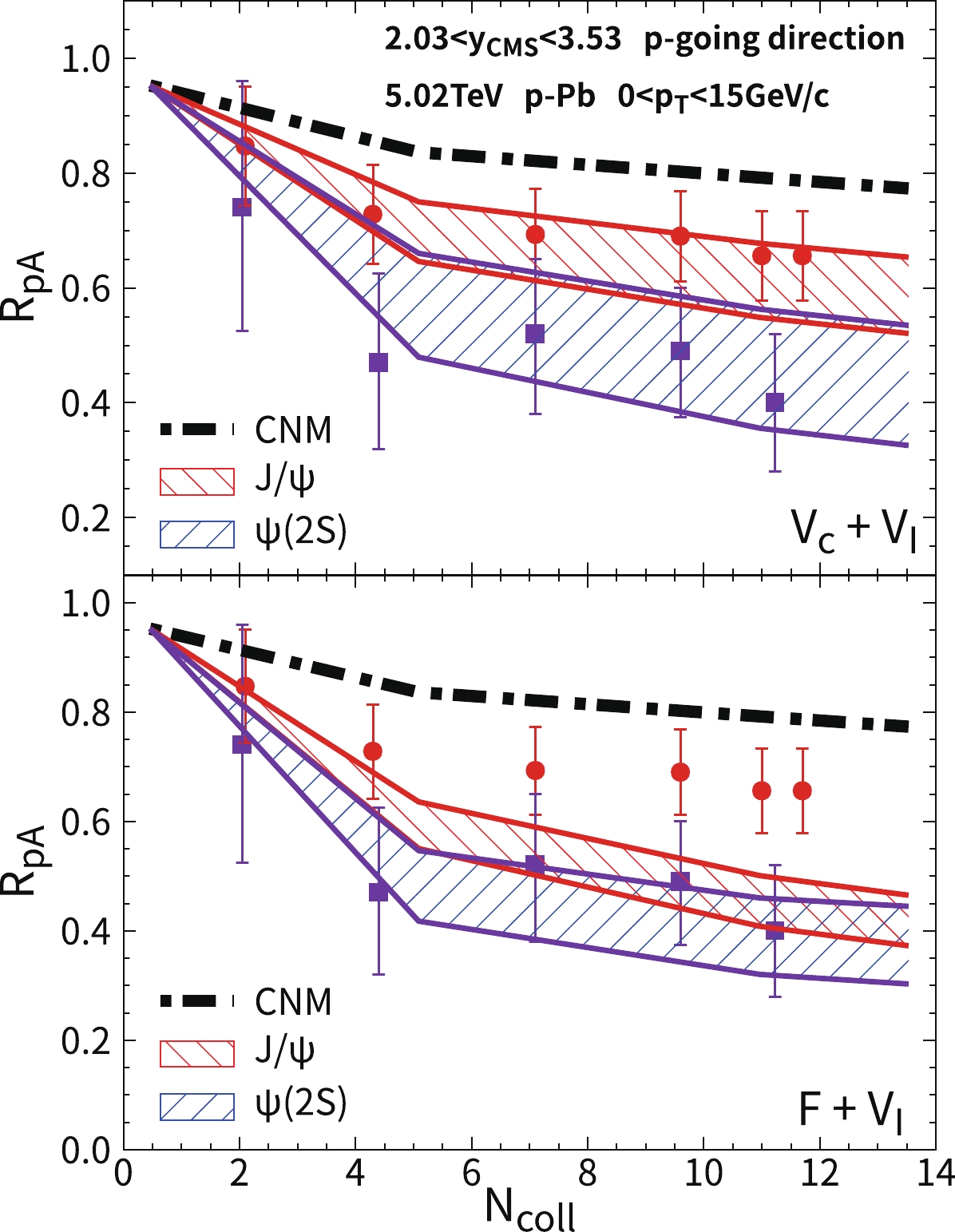
Figure 5. (color online) Nuclear modification factors of
J/ψ andψ(2S) as a function of the number of binary collisionsNcoll in the forward rapidity of√sNN=5.02 TeV p-Pb collisions. The black dashed-dotted line is the calculation with only cold nuclear matter effects. The in-medium potential is taken to beV=Vc(r)+VI(T,r) in the upper panel andV=F(T,r)+VI in the lower panel. The red and blue bands are the results ofJ/ψ andψ(2S) , respectively. The experimental data are from the ALICE Collaboration [63, 64]. The red circles and blue squares correspond toJ/ψ andψ(2S) , respectively.The charmonium wave function is loosely bound in the
cˉc wave function. The wave function expands outside, which reduces the overlap of the wave function between thecˉc wave package and theJ/ψ eigenstate. This results in a transition of the final yields from theJ/ψ toψ(2S) states and scattering states. The value ofRpA is strongly reduced withV=F+VI . The feed-down process (χc,ψ(2S)→J/ψX ), which occurs after the charmonium escapes the hot medium, has been included inRpA . Comparing the model calculatedRpAs with the experimental data, the vacuum potential is favored, and the color screening effect appears to be weak for charmonium at the temperatures available in p-Pb collisions. The imaginary potential is essential to explain the difference betweenRJ/ψpA andRψ(2S)pA because the real potential in vacuum alone does not change the final projection of the wave-function of thecˉc pair into different charmonium species.The
pT dependence ofJ/ψ andψ(2S)RpA is also studied in Fig. 6. The black dashed-dotted line is the calculation with only cold nuclear matter effects. In the forward rapidity of p-Pb collisions, the shadowing effect reduces charmonium production. The value ofRpA from cold nuclear matter suppression alone increases with transverse momentum owing to a weaker shadowing effect at larger transverse energies. The dashed-dotted line and bands increase withpT . Moreover,cˉc dipoles with large velocities move rapidly out from the hot medium, whereRpA becomes larger owing to weaker hot medium suppression. In the upper panel of Fig. 6, theoretical calculations with only the imaginary potential can explainRJ/ψpA andRψ(2S)pA better than with the case of the strong color screening effect in the lower panel of Fig. 6. The theoretical bands correspond to the uncertainty onVI .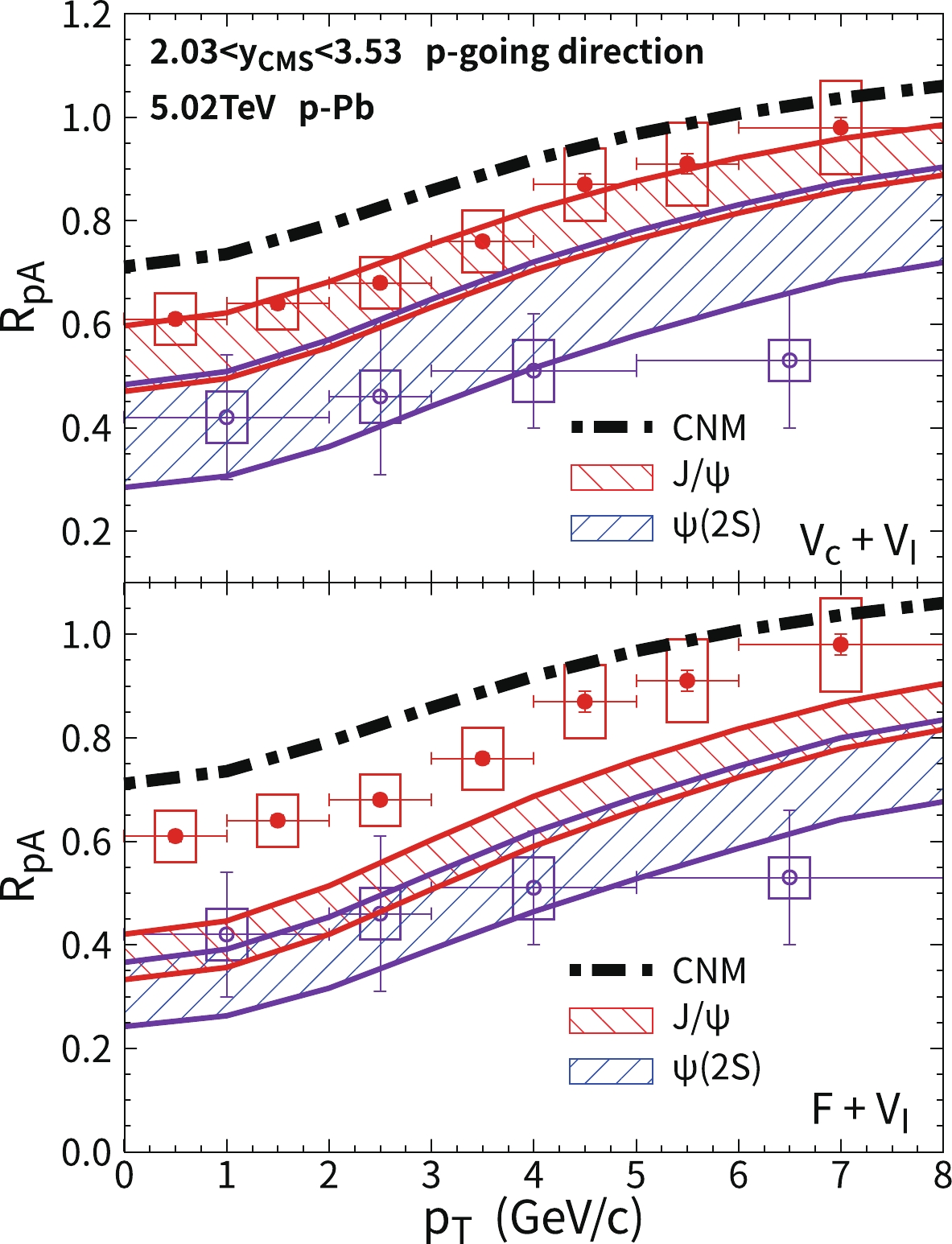
Figure 6. (color online)
pT dependence of theJ/ψ andψ(2S) nuclear modification factors in forward rapidity in minimum-bias√sNN=5.02 TeV p-Pb collisions. The other conditions are similar to those in Fig. 5. The experimental data are from the ALICE Collaboration [65]. The red circles and blue squares correspond toJ/ψ andψ(2S) , respectively.In backward rapidity, defined as the Pb-going direction, the anti-shadowing effect can increase
RpA ofJ/ψ andψ(2S) , as shown by the black dashed-dotted line in Fig. 7. Owing to the uncertainty on the anti-shadowing effect, we consider an upper-limit anti-shadowing effect, whereRpA is approximately 1.27 in most central collisions.RpA with only the cold nuclear matter effect is greater than unity. After considering the imaginary potential, production of charmonium excited states are suppressed, andRψ(2S)pA is below unity. Because approximately 40% of the finalJ/ψ originated from the decay of excited states (χc ,ψ(2S) ) toJ/ψ , the suppression of excited states affectRJ/ψpA via the feed-down process. As shown in the upper panel of Fig. 7, theoretical calculation ofJ/ψRpA reproduces the experimental data in peripheral and semi-central collisions, whereas in central collisionsNcoll∼12 , the theoretical band is at the edge of the experimental data. This discrepancy between the theoretical results and the experimental data is also reflected in the semi-classical transport model [23] and comover model [66], whereRJ/ψpA≲1 atNcoll∼12 . In a strong color screening scenario with the F-potential,J/ψ theoretical bands strongly underestimate the experimental data. This observation is consistent in both backward and forward rapidities.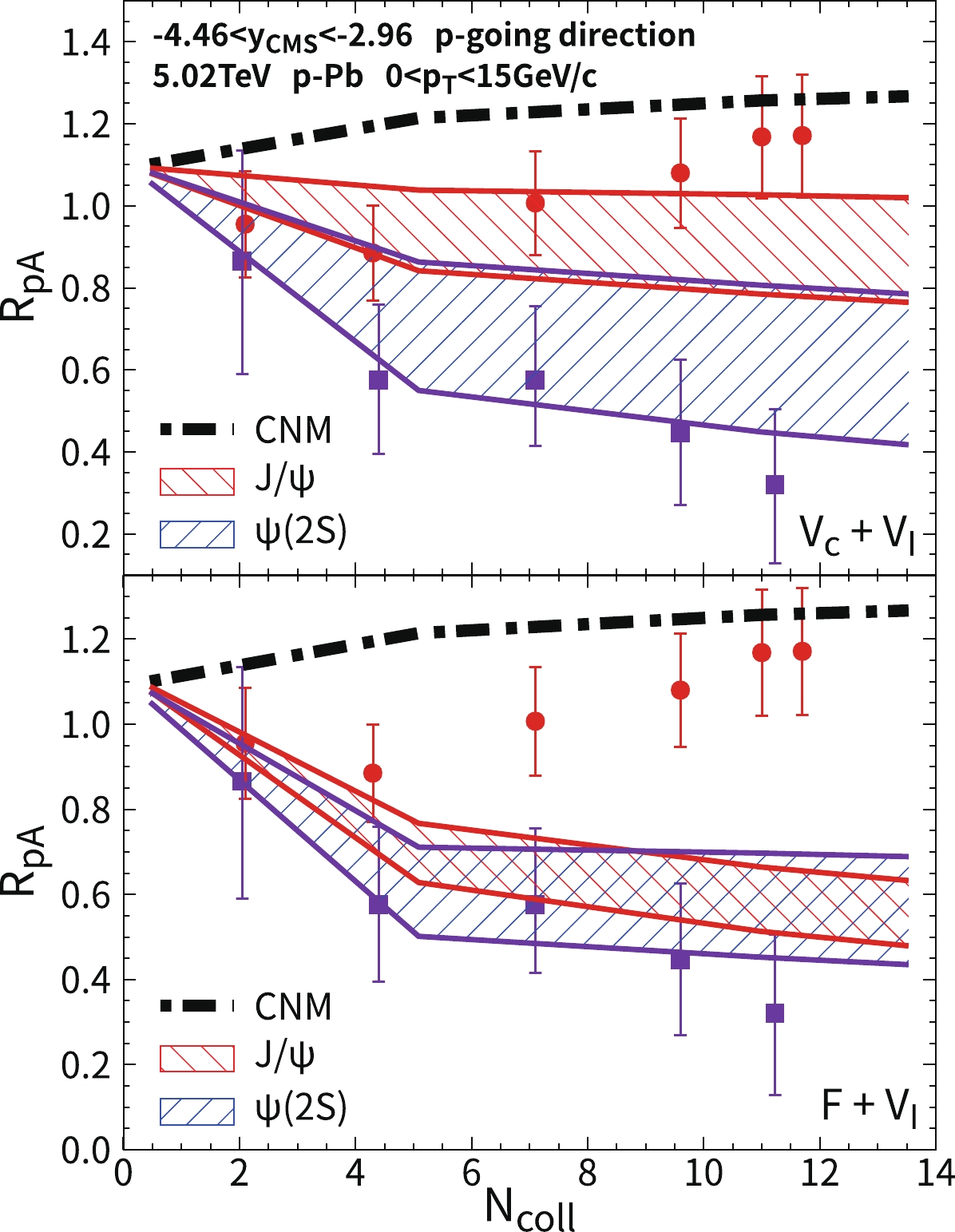
Figure 7. (color online) Nuclear modification factors of
J/ψ andψ(2S) as a function of the number of binary collisionsNcoll in the backward rapidity of√sNN=5.02 TeV p-Pb collisions. The red and blue bands are the results ofJ/ψ andψ(2S) , respectively. The bands originate from the uncertainty onVI . In-medium heavy quark potentials are taken asV=Vc(r)+VI(T,r) in the upper panel andV=F(T,r)+VI(T,r) in the lower panel. The experimental data are from the ALICE Collaboration [63, 64]. The red circles and blue squares correspond toJ/ψ andψ(2S) , respectively.The
pT dependence of charmoniumRpA is also calculated in the backward rapidity and presented in Fig. 8. The black dashed-dotted line only includes cold nuclear matter effects. Hot medium effects reduceRpA ofJ/ψ andψ(2S) in the lowpT region. At highpT , the anti-shadowing effect causesRJ/ψpA to become larger than unity. When the real part of the heavy quark potential is taken as the vacuum potential, theoretical bands describe the data well in the upper panel of Fig. 8, whereas calculations with the F potential in the lower panel give smallRpA ofJ/ψ owing to the expansion of thecˉc wave package.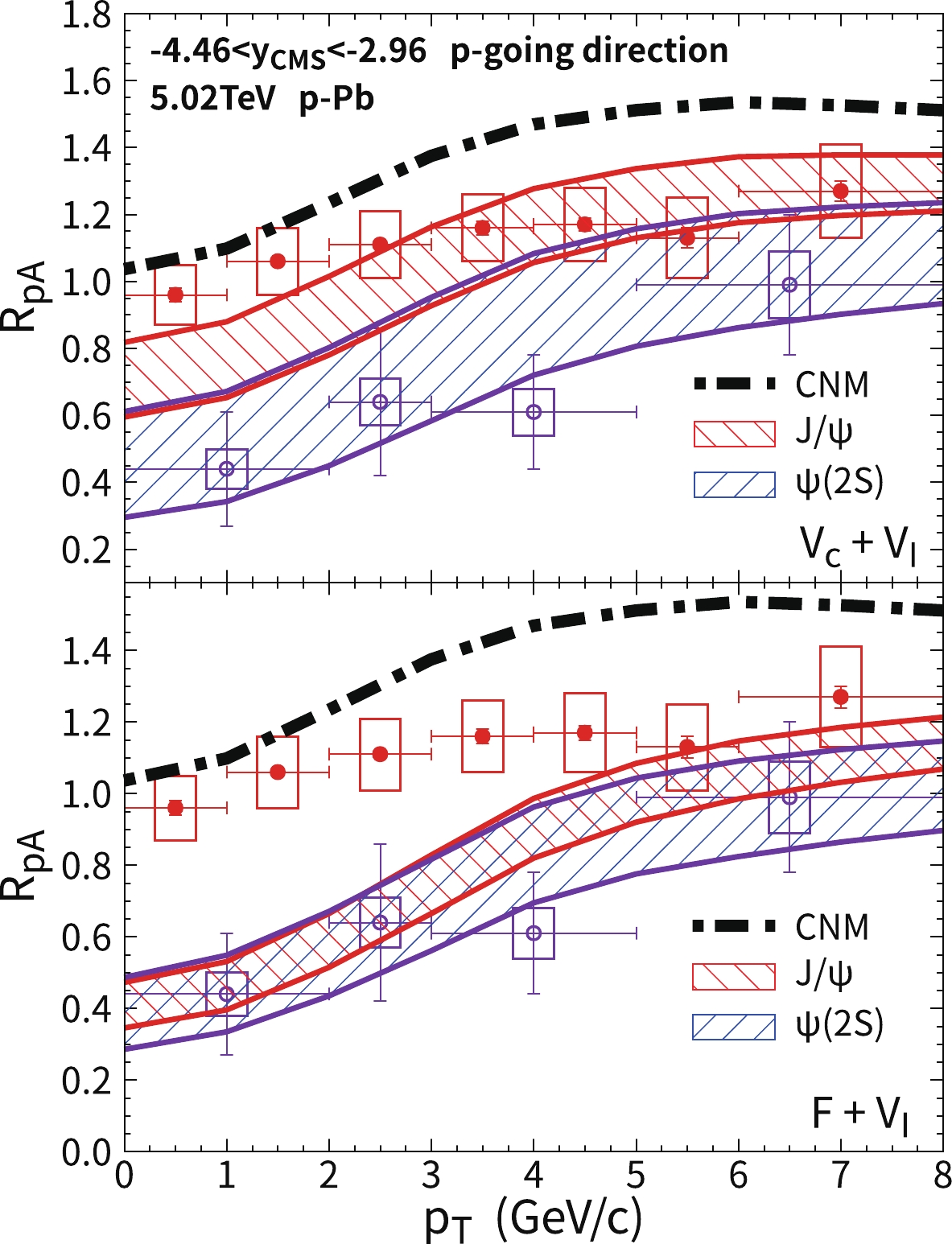
Figure 8. (color online)
pT dependence of theJ/ψ andψ(2S) nuclear modification factors in backward rapidity in minimum-bias√sNN=5.02 TeV p-Pb collisions. The other conditions are similar to those in Fig. 7. The experimental data are from the ALICE Collaboration [65]. The red circles and blue squares correspond toJ/ψ andψ(2S) , respectively. -
In this study, we employ a time-dependent Schrödinger model to investigate hot medium effects on charmonium observables in proton-nucleus collisions at
√sNN=5.02 TeV. We initialize acˉc distribution with cold nuclear matter effects, including the (anti-)shadowing and Cronin effects. Both color screening and parton scattering encodes in the real and imaginary parts of the potential, which is further incorporated into the Hamiltonian utilized in quantum evolution. To probe the strength of the color screening effect, the imaginary part of the potential is constrained by a statistical fit to lattice QCD data, while two scenarios of the real potential are considered. In the simulation, acˉc dipole, initialized with different positions and momenta, moves along different trajectories in the hydrodynamic medium, and its internal evolution is described by the Schrödinger equation. A comparison of the simulated results with experimental data favors a weak screening scenario or a strong binding scenario. Meanwhile, the imaginary potential is crucial to consistently describe the suppression of theJ/ψ andψ(2S) states and the gap between their suppressions due to the different widths of their wave-functions, indicating the importance of parton scattering for different charmonium species.The essential phenomenological results of quantum evolution presented in this paper are consistent with those from thoroughly studied semi-classical transport approaches. In semi-classical approaches, color screening affects the in-medium binding energies of charmonium states, leading to different dissociation widths, whereas in the potential model discussed in this paper, color screening broadens the
cˉc wave-function, leading to a transfer of bound states to scattering states. The non-Hermitian imaginary part of the potential directly eliminates the tracking of acˉc pair, corresponding to the dissociation width. Both effects lead to different suppression strengths; however, the imaginary part (dissociation) is shown to be crucial for suppression within both the potential approach and other semi-classical approaches.There are limitations to this approach. Because the size of the
cˉc pair is not significantly smaller than the size of the medium produced in pA collisions, screening at different positions of the potential may vary. Thus, a potential model may not be well-defined in this case. However, this approach is only one angle of investigating charmonium production in small systems. A potential model for bottomonium would be favored as a subject of study. Statistical extraction of the in-medium heavy quark potential has been conducted using a semi-classical transport approach [67], which incorporates the potential in the binding energies and dissociation widths of bottomonium states. Within this potential approach, direct extraction of the in-medium heavy-quark potential can be performed for bottomonium in AA collisions. We leave this to further publications. -
We appreciate inspiring discussions with Pengfei Zhuang, Ralf Rapp, Shuai Liu, and Yunpeng Liu.
Investigating color screening in proton-nucleus collisions with complex potentials
- Received Date: 2022-05-23
- Available Online: 2022-11-15
Abstract: Color screening and parton inelastic scattering modify the heavy-quark antiquark potential in mediums consisting of particles from quantum chromodynamics (QCD), leading to the suppression of quarkonium production in relativistic heavy-ion collisions. Owing to the small charm/anti-charm (





 Abstract
Abstract HTML
HTML Reference
Reference Related
Related PDF
PDF
















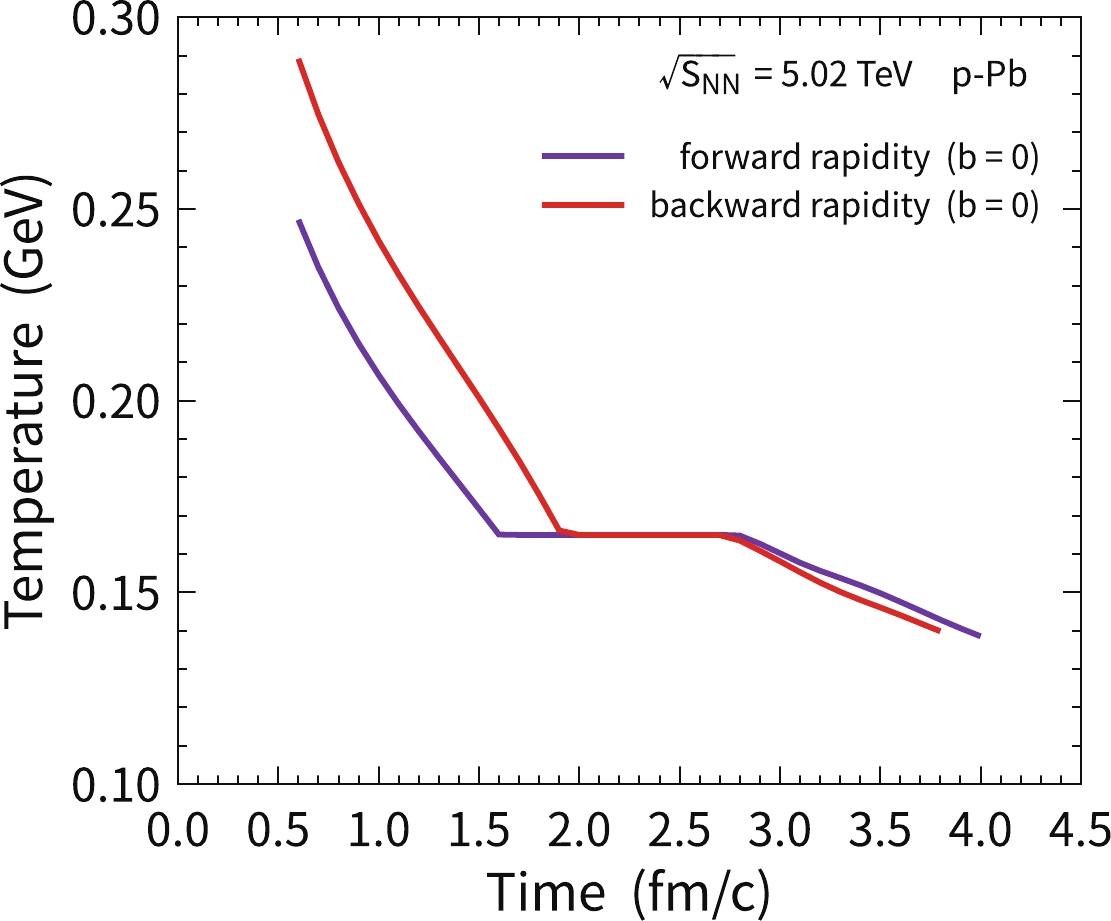



 DownLoad:
DownLoad: